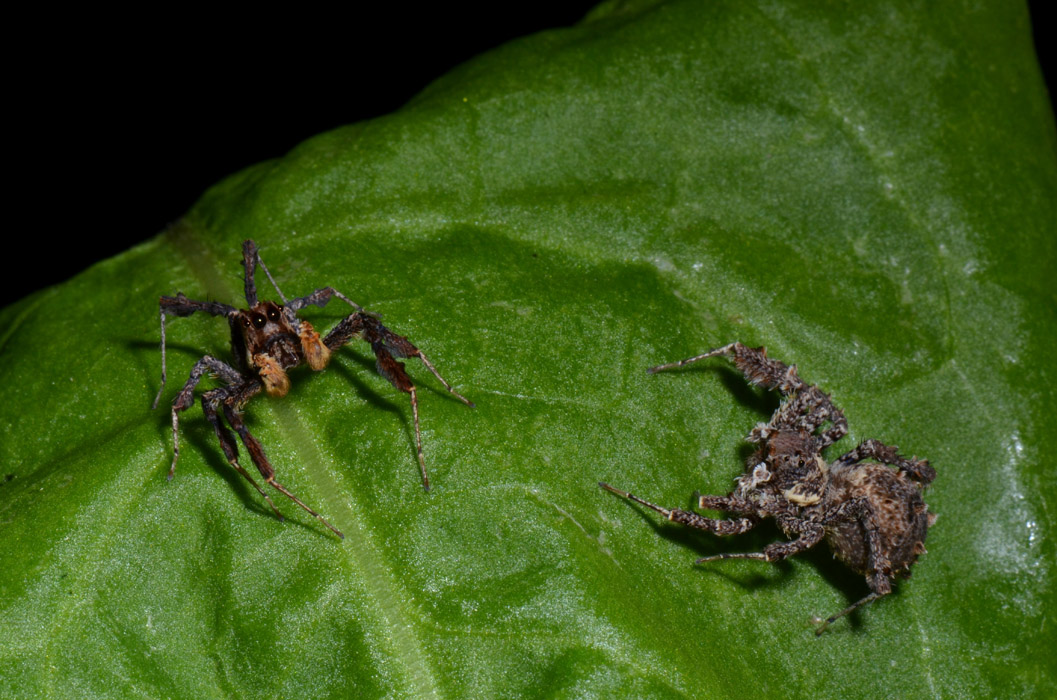Department of Primary Industry and Resources
The crop destroying exotic plant pest, fall armyworm (Spodoptera frugiperda), was recently detected in Katherine.
Four adult moths were located in a trap at after a network of surveillance traps were increased in key agricultural areas across the Northern Territory (NT), Queensland, and Western Australia to determine the current distribution and provide an early detection system for industries across these regions.
The Department of Primary Industry and Resources (DPIR) confirmed the diagnosis on 26 March 2020, following morphological analysis and molecular diagnostic testing. Specimens were subsequently detected in traps located in the Darwin region and in the Douglas-Daly region.
Although the pest is native to tropical and subtropical regions of the Americas, it has rapidly spread to and throughout Africa, the Indian subcontinent, China and Southeast Asia since 2016.
Fall armyworm was first detected in Australia in January 2020 on the Torres Strait islands of Saibai and Erub, and has spread quickly to other parts of North Queensland including Bamaga, Croydon South Johnstone, Tolga, Lakeland, Mareeba, the Burdekin and Bowen.
“The NT Government is working closely with other state and territory governments, industry groups and communities to monitor this pest, raise awareness and prepare industries for the likely ongoing management of the pest,” NT Chief Plant Health Officer, Dr Anne Walters said.
Managing the impact of fall armyworm is a priority, as the Consultative Committee on Emergency Plant Pests (CCEPP) concluded in February that fall armyworm is not technically feasible to eradicate from Australia.
This is due to the pest’s reproductive capacity, ability to fly long distances, wide host range, spread of known infestations, and potential for re-infestations from Australia’s northern neighbours.
“Given the pest’s ability to disperse over large distances quickly, combined with the remoteness and spread of known infestations, the NT Government recognised the importance of increasing efforts to effectively manage this pest. The NT Government is working closely with industry to support a partnered approach to pest management planning and to implement a targeted management program for this pest,” Dr Walters said.
Fall armyworm feeds on large numbers on the leaves, stems and reproductive parts of more than 350 plant species, causing major damage to economically important cultivated grasses such as maize, rice, sorghum, sugarcane and wheat, as well as vegetable and fruit crops and cotton.
Destruction of crops, such as maize and rice, can happen almost overnight without control measures when population levels are high.
“This pest is known to cause significant economic losses overseas and it is important that we work collaboratively to identify and carry out appropriate and effective management activities to support our growers,” Dr Walters said.
Appropriate registered pesticides may be suitable to treat fall armyworm infestations, if used in accordance with label instruction and relevant state or territory government control of use legislation.
The Australian Pesticide and Veterinary Medicine Authority (APVMA) has issued a number of permits for the use of certain chemicals for the control of fall armyworm, and is currently assessing, as a priority, additional applications for permits for the use of chemicals against fall armyworm – permit information is available from portal.apvma.gov.au/permits.
The department has been working closely with the Northern Territory Farmers Association to create early awareness of the pest and the possible impact to growers and producers.
A technical workshop with research and development experts and funders to explore the potential impact on key plant crops, control options and identify knowledge gaps was held in March 2020.








